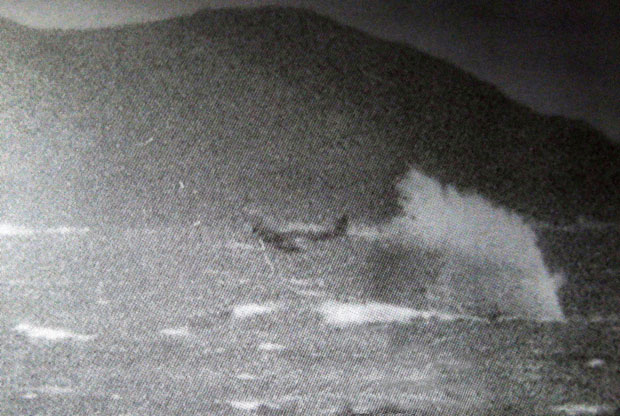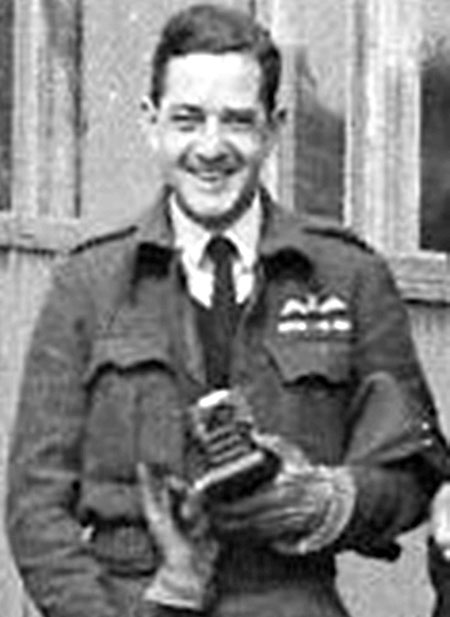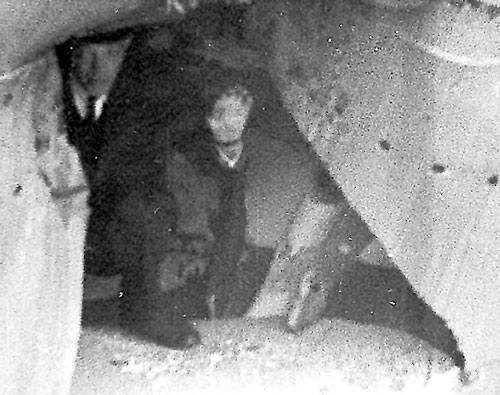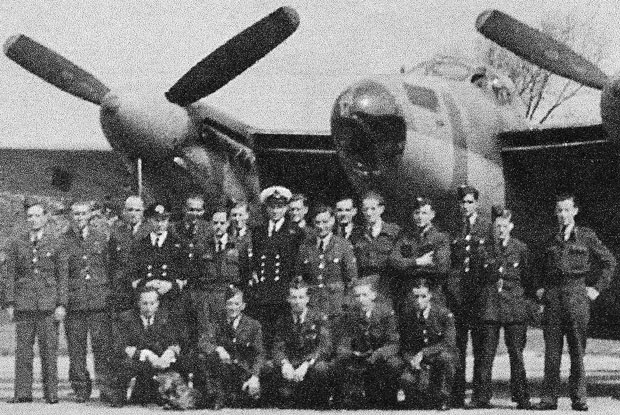HAND-WRITTEN notes and sketches by Lieutenant Commander Leo Lane RNVR discovered in 2019 have confirmed RAF Helensburgh’s role in organising the Barnes Wallis Highball bouncing bomb trials on Loch Striven.
These trials took place in September and October 1944, but at the end of World War Two RAF Helensburgh went into mothballs.
Most of the personnel returned to their former base at Felixstowe, were assigned to squadrons, or were demobbed.
But this was not quite the end of RAF Helensburgh, which was the cover name for the Marine Aircraft Experimental Establishment spread across the burgh, at Rhu, and in Glen Fruin — or of its loss of life.
It conducted secret trials of aircraft and weapons, and even when mothballed MAEE kept a detachment in the west of Scotland during October 1945 to finish the trials of Highball and new types of naval depth charges.
The MAEE’s most experienced pilot was Squadron Leader Albert Stewart Carswell, and he was one of the officers who remained in the area.

He had previously made numerous Highball and depth charge drops from Mosquito and Wellington bombers at Loch Striven, but just a month after the war ended the Squadron Leader was killed on October 17 1945, flying the Wellington bomber NA929 on depth bomb trials.
The bomb exploded prematurely when the aircraft was just above sea level (left), also killing Warrant Officer James Sparkes and MAEE civilian Charles Bound.
Sparkes had cheated death earlier in the war when a Lancaster bomber was shot down over France. He was the only survivor and escaped back to Britain, and he was given a ‘safe posting’ at RAF Helensburgh to see the war out.
Flying Officer Dennis Tanner, who was a special appointment as armament officer at RAF Helensburgh in time for the Highball trials at Loch Striven, regularly flew with Carswell whom he regarded as a friend and most capable pilot.
Tanner had returned to Felixtowe, but when he learned a new depth charge was being tested in Scotland he volunteered to return to fly with Carswell. However permission was denied.
Tanner and his colleagues were devastated by the news that Carswell and Sparkes had been killed.

Then in the wake of this tragedy, Squadron Leader Arthur Jacques (right) was killed just eight days later, on October 25, flying a Mosquito for the MAEE.
He was testing Highball as used by the special squadron of ‘Highball Mosquito bombers’ 618 Squadron.
An MAEE detachment of three Mosquitoes led by Leo Lane, who had been in overall command of Highball trials since Barnes Wallis came up with the concept, remained in Scotland.
On the fateful day Squadron Leader Myles Scargill had made seven successful sea level runs and Jacques six.
On Jacques seventh run flying Mosquito DZ579, at between 30 ft and 50 ft above sea level, a larger than usual splash from Highball caught the tail of the Mosquito.
Jacques was killed along with Flight Lieutenant Eric Savill. Both were experienced aviators ex-RAF Coastal or Bomber Command.
Leo Lane had been involved at a most senior level from the start of Highball trials at the end of 1942.
After Barnes Wallis told him about it, Leo ‘sold’ the concept of this revolutionary weapon to the Royal Navy, which then got on board with the Ministry of Aircraft Production.
Leo then organised early land-based trials followed by those at Loch Striven hosted by RAF Helensburgh.

There is a photograph of Leo looking out of a large hole on the side of HMS Malaya after a hit by an inert Highball. Barnes sent Leo the photograph year later when his friend was terminally ill.
John Anderson, who has links with Leo’s family, kindly supplied information for this article. He forwarded to MAEE researcher and author Robin Bird the wartime notes written by Leo about RAF Helensburgh organising the likes of accommodation, bomb loaders, photography and cine film analysis, which was carried out under armed guard.
618 ‘Mosquito’ Squadron went to Australia early in 1945 but there were no suitable Japanese targets left for them to attack, so it returned to the UK to be disbanded. Highball, designed to sink the German battleship Tirpitz, was never used in anger despite its potential.

The Highball Mosquito team that remained in the final days of the war based at RAF Helensburgh.




